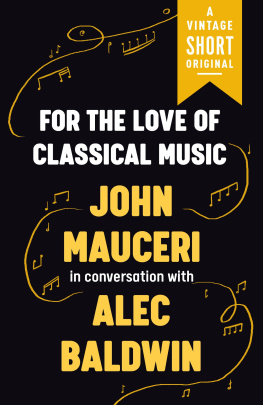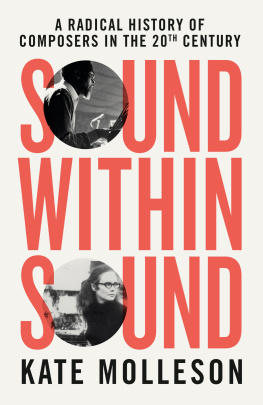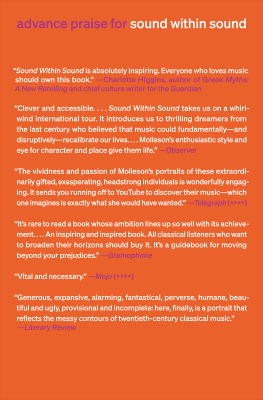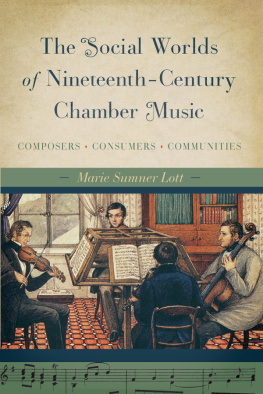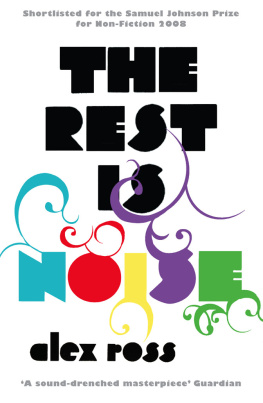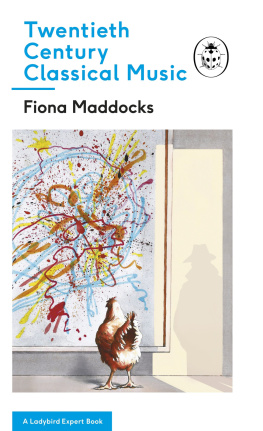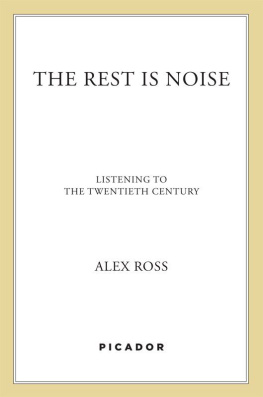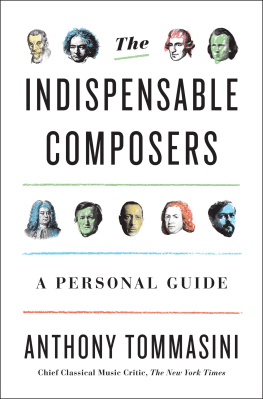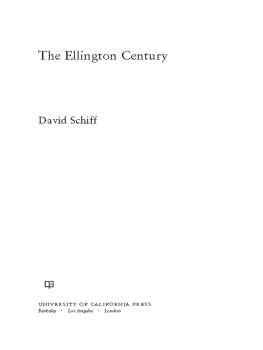The War on Music
The War on Music
RECLAIMING THE TWENTIETH CENTURY

John Mauceri

Published with assistance from the foundation established in memory of Amasa Stone Mather of the Class of 1907, Yale College.
Copyright 2022 by John Mauceri. All rights reserved. This book may not be reproduced, in whole or in part, including illustrations, in any form (beyond that copying permitted by Sections 107 and 108 of the U.S. Copyright Law and except by reviewers for the public press), without written permission from the publishers.
Yale University Press books may be purchased in quantity for educational, business, or promotional use. For information, please e-mail (U.K. office).
Set in Adobe Garamond type by Integrated Publishing Solutions.
Library of Congress Control Number: 2021944874
ISBN 978-0-300-23370-4 (hardcover : alk. paper)
A catalogue record for this book is available from the British Library.
This paper meets the requirements of ANSI/NISO Z39.48-1992 (Permanence of Paper).
For Michael Haas, who (in 1990) asked, Why, John, after a half-century, do we not play the music Hitler banned?
Here, I hope, is the answer.
Though I cannot tell why it was exactly that those stage managers, the Fates, put me down for this shabby part of a whaling voyage, when others were set down for magnificent parts in high tragedies, and short and easy parts in genteel comedies, and jolly parts in farcesthough I cannot tell why this was exactly; yet, now that I recall all the circumstances, I think I can see a little into the springs and motives which being cunningly presented to me under various disguises, induce me to set about performing the part I did, besides cajoling me into the delusion that it was a choice resulting from my own unbiased freewill and discriminating judgment.
Moby-Dick, HERMAN MELVILLE
Fifty years is ample time in which to change a world and its people almost beyond recognition. All that is required for the task are a sound knowledge of social engineering, a clear sight of the intended goaland power.
Childhoods End, ARTHUR C. CLARKE
Contents
The War on Music

Introduction
In the first months of the third decade of the twenty-first century, an executive order emerged from Washington, D.C., that was called Making Federal Buildings Beautiful Again. It mandated that new federal buildings in the United States must be designed according to the classical architectural style of Roman temples as the default style. Predictably, this caused outrage among many and set up fake battle lines between Americas conservatives (the Republicans and President Donald Trump) and liberals (the Democrats and so-called progressives). Predictably, on February 24, 2021a mere five weeks after his inaugurationDemocratic President Joe Biden revoked the order. Beauty was the justification for the Trump administrations order. Consistency and reference were the means to that end.
All this brought back one of the most contentious, ironic, and little-understood periods of art and music: the de-Nazification of Europe after World War II, the Cold War, and the then Republican administrations official support of a very different artistic stylethe avant-gardeportraying it as a fundamental example of freedom of expression in art and music, thus countering the Soviets official stance against it. The Soviets supported visual art that was representationala painting of an apple looked like an appleand music that continued a long tradition of tonal music: music that could be full of edginess, conflict, and challenge, but that would inevitably end in victory and uplift. Most importantly, Soviet music had to be comprehensible to the public. And just as the regimes of Mussolini and Hitler supported very similar anti-experimental concepts of art and beauty, the U.S. military believed that any composer who had written nontonal music during the war was neither a Nazi nor a Fascist and a get-out-of-jail-free card was handed to the composer. The unintended consequence of that policy was that any composer who wrote non-avant-garde (if such a phrase can be accepted) classical musicsymphonies, operas, chamber musicwas required to prove his innocence of having been a Nazi or a Fascist.
The Cold War became a battleground between the Soviets view of an ever-evolving traditionalism and the Wests embrace of the radically new, the challenging, and the iconoclasticone that viewed beauty in music as being both inappropriate and banal. The concept of new, however, was based on theories that derived from 1909 and its Futurist Manifesto. Never mind that the public did not embrace the new musiceither in the 1910s, the 1960s, or, it should be noted, in the 2020s. This was and continues to be a battle of philosophiesand politics.
Perhaps music and art have always been, to some extent, pawns of politics: the plaything of kings and popes. The archbishop of Salzburg liked Mozarts music, until he didnt. The public has always had its songs and dances, and the rulers had theirsthough they sometimes intersected, as when King George II commissioned Londons popular composer George Frideric Handel to compose the Royal Fireworks Music in 1749.
Architecture shares some of the aspects of music, but just some. Both are experienced through time. Both are inherently structural, though musics structures are temporal and not visible. Buildings change over time since they are open to the elements and subject to erosion, and sometimes, explosion. Music disappears by silencing itwhich, as we will see, can be the result of an overt action or simply of general lack of interest. Even the greatest architectural achievements can be radically changed, like the great Catholic cathedral built in the sixth century that was transformed a century later into a mosque in which the bells and altar were destroyed, the Christian mosaics plastered over, and minarets constructed on its exterior. Istanbuls Hagia Sophia was then reconstituted as a secular museum in 1935 and in 2020 reclassified as a mosque, with the potential of further architectural changes. Music is always in a state of transformation since it depends on repetition to exist, and even if that repetition is exact because of recordings, the perception of the exact repetition will not be the same since it must be interpreted by an ever-evolving listener.
We expect a bank, a church, or a school to indicate by its external appearance what goes on inside. This does not require a provocative executive order. Rather, it seems like common sense. Buildings that are modern references to ancient Rome say something about our collective expectations. As we shall see, European culture, out of which comes much American and international culture, is full of fake Roman temples, to use a phrase in a New York Times editorials headline.
Many government buildings in Washington, D.C., are good examples of those Roman monuments, but so are Berlins Brandenburg Gate and Pariss Arc de Triomphe. They are all fake, insofar as they were not built during the reign of Julius Caesar, but they do say something about what people expected architecture to do at the time of their construction, and they are beloved symbolsjust as the radical architecture of the Eiffel Tower, Antoni Gauds Sagrada Famlia in Barcelona, and Frank Gehrys Guggenheim Museum in Bilbao are. It is not necessarily about conservative versus modern.
Next page


